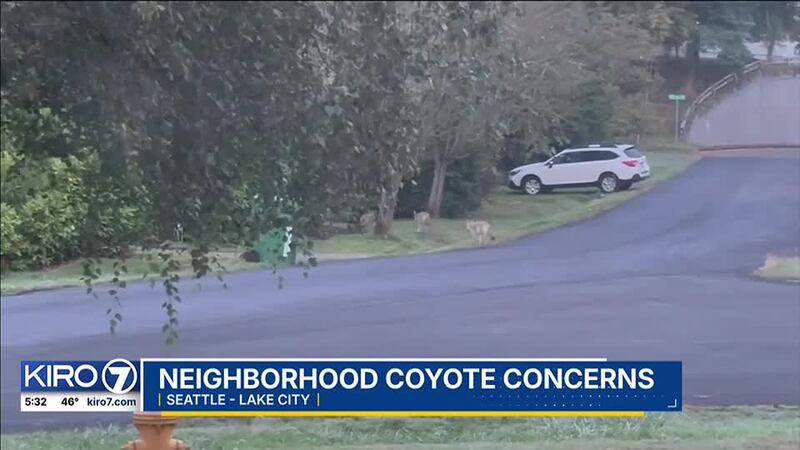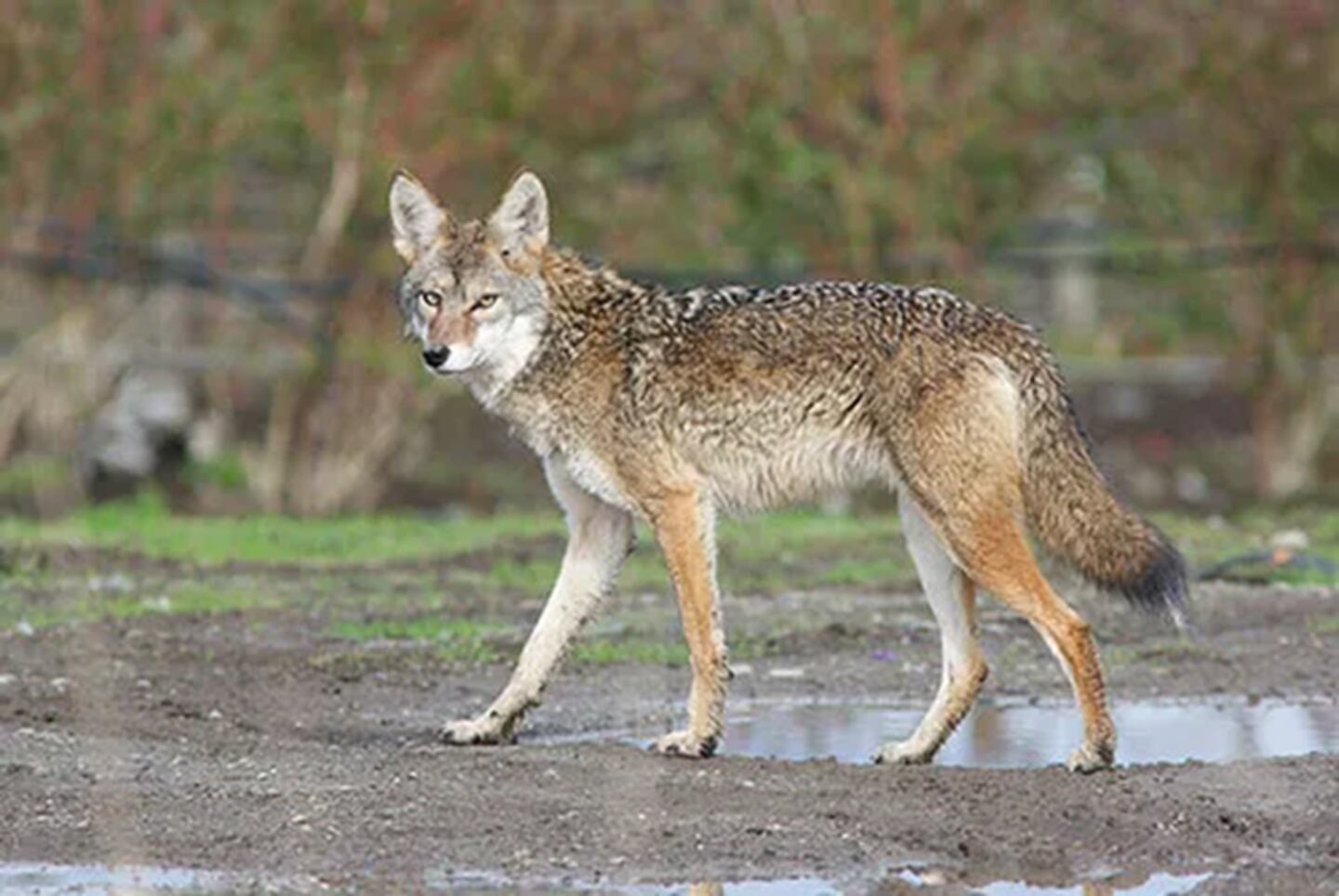SEATTLE — In recent months, people in a Seattle neighborhood have reported more coyote sightings in their community.
In Lake City, people told KIRO 7 News that they’re seeing the wild animals almost every single day, including a pack of at least five coyotes.
Neighbors in a Seattle neighborhood say they're seeing more coyotes wandering in the recent months. People tell me they're concerned after one of their neighbors' dogs was killed by the wild animal. Why there are more coyotes out & how to protect yourself on @KIRO7Seattle at 6. pic.twitter.com/nDZUOyx53U
— Louie Tran (@louie_tran) October 30, 2024
“I see them every night,” Patti Murphy said.
About two weeks ago, Murphy said she had encountered a coyote that killed her seven-year-old Yorkshire Terrier.
Murphy, who’s currently going through chemotherapy treatment, believes her dog, Tinker Bell, was trying to protect her.
“She went running down after the coyote and she did a really loud yelp, and the coyote went that direction into his yard,” she added.
The pet owner, along with neighbors, tried to search for her best friend, but their efforts came up empty-handed, she said.
“I cry every night when I go to bed because I don’t have her,” she shared. “We did everything together. She was always with me.”
According to the Washington State Department of Fish and Wildlife (WDFW), it’s common to spot these wild animals in cities and suburban areas.
Coyotes are adaptable and can eat all types of foods to survive, including rabbits, small rodents to garbage, birdseeds, fruit, and even pet food.
The wild animal is often active at night and during early morning and evening hours.
Officials said young coyotes often branch off from their families during October and November to find their own breeding territory. However, in some cases, a couple of pups may stay with their parents to form a family unit.
Janice Blackmore, who grew up in the Lake City neighborhood, captured a video of a pack of at least five coyotes wandering around her house.
While the recent uptick is new to her, the pet owner said she’s not too concerned about the wild animals.
“This year has been really different. In September, pretty much every morning we’re seeing five to six coyotes in front of our house,” she said. “They would often come and lay out in our front yard in the early morning when it’s still dark out. So, we would wake up and see five, six coyotes lying in our front yard.”
“They very quickly disperse. They’re definitely not confronting humans,” she added.
However, for other neighbors like Constanze Villines, she is concerned about the safety of her smaller pets after spotting a coyote peeing on the road as she was driving.
“As I got closer, I’m like, ‘That’s not a dog. That’s a coyote,’” she shared. “It’s definitely a little concerning. It’s a wild animal. It’s so used to being close to humans. It just walks down the street and doesn’t run away even when a car comes towards it so that’s definitely concerning.”
WHAT TO DO AROUND COYOTES:
If you ever encounter a coyote, state officials urge you to not run away. In fact, stand tall, make loud noises, wave sticks, squirt it with a hose or otherwise, “haze” the coyote if it approaches.
The “human hazing” can help re-establish the coyote’s natural fear of people.
Coyotes are also known for digging under and climbing over fences.
“We advise that a 5-foot woven-wire fence with extenders facing outward at the top of each post should prevent coyotes from climbing over.” A sketch of this kind of arrangement is available on our Coyotes webpage under “Preventing Conflict.” It’s also advisable to bury fencing at least 8 inches deep (coyotes are talented diggers!). Using electric fencing can also help prevent coyotes from accessing an area,” the WDFW said.
If people witness a coyote attack on pets or domestic livestock, WDFW officials encourage people to report it to the WSDFW Police Department by calling (360) 902-2936 or emailing them at wildcomm@dfw.wa.gov, or reporting it online at wdfw.wa.gov/about/enforcement/report. In the event of an immediate public safety issue or attack on a person, call 911.
©2024 Cox Media Group











